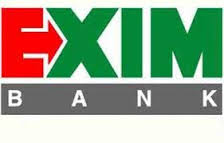PERFORMING INVESTMEN OR CLASSIFIED INVESTMENT ACCOUNT MANAGEMENT
All PIs are assigned to an Account Manager within the RU, who is responsible for coordinating and administering the action plan/recovery of the account, and serves as the primary customer contact after the account is downgraded to substandard.
Types of classified investment
Loan classification is required to have a real picture of the loan and advances provided by the Bank. It helps to monitor and take appropriate decision regarding each loan account. All types of loans fall into following four scales:
Categories of investments and advances of a bank:
a. Un-classified: The repayment of investment and advances are regular.
b. Sub-standard: The repayment of investment and advances are irregular but has reasonable prospect of improvement.
c. Doubtful debt: It is unlikely to be repaid but special collection efforts may result in partial recovery.
d. Bad/loss: There is little chance of recovery of investments and advances.
Basis for loan Classification
There are two ways loans are classified: 1) Objective Criteria, 2) Qualitative Criteria.
Objective Criteria
Continuous investment: A continuous loan will be treated as irregular/overdue if the advance has not been renewed, that is expiration date is passed. Criterions for loan classification are given in table
Table4 -: Criteria for Loan Classification of Continuous Loan
| Sub-standard | Doubtful | Bad/loss |
| Irregular for 3 months or more but less than 6 months. | Irregular for 6 months or more but less than 12 months. | Irregular for 12 months or above. |
Term investment:
If any installment of a term loan is not repaid within as per repayment schedule the unpaid amount will be treated as overdue installment.
Criteria for Investment Classification of Term Investment Payable within 5 Years
| Sub standard | Doubtful | Bad/loss |
| If the amount of overdue installment stands equal or more than the amounts which is repayable 6 months | If the amount of overdue installment stands equal or more than the amounts which is repayable 12 months | If the amount of overdue installment stands equal or more than the amounts which is repayable 18 months. |
Qualitative Criteria
The investment (continuous, demand, and term loan) are classified by the bank whenever it has reason to believe the borrower may not be able to repay the loan due to change is the circumstances under which the loan was originally sanctioned.
The investment is classified as sub-standard on the basis of qualitative judgment, if there is a possibility to change the present situation by taking appropriate steps, although there is a possibility to become loss of the investment. When the loans are categorized as sub- standard it means the repayment of investment and advances are irregular but has reasonable prospect of improvement.
But if there is no possibility of recovery of loan after taking adequate steps, then the loan is treated as doubtful.
But it is not possible to recovery the loan even after taking all out efforts then the loan is treated as bad/loss.
Recovery Units ensure that the followings are carried out when an account is classified as Sub Standard or worse:
- Facilities are withdrawn or repayment is demanded as appropriate. Any drawings or loans are restricted, and only approved after careful scrutiny and approval.
- CIB reporting is updated according to Bangladesh Bank Guidelines and the borrower’s Risk Grade is changed as appropriate.
- Investment loss provisions are taken based on Forced Sale Value (FSV).
- Investments are only rescheduled in conjunction with the Large Loan Rescheduling guidelines of Bangladesh Bank. Any rescheduling is based on projected future cash flows and is strictly monitored.
- Prompt legal action is taken if the borrower is uncooperative.
RATIO OF CLASSIFIED INVESTMENT OVER TOTAL ASSETS AND INVESTMENT
The most important indicators intended to identify problems with asset quality in the loan portfolio are the percentage of gross non-performing loans (NPLs or classified loans) to total assets and percentage of gross non-performing loans to total loans. The lower figures indicate better asset quality.
Asset Quality of EXIM Bank
| Year | 2005 | 2006 | 2007 | 2008 | 2009 |
| Classified Investment to Total Assets Ratio | 1.74% | 1.45% | 3.45% | 1.23% | 1.47%
|
| Classified Investment to Total investment Ratio | 2.40% | 1.89% | 1.46% | 1.58% | 1.88% |
Since the Bank is a newly established bank it had no classified loan in 2000 and 2001. The ratios show an upward trend indicates that the bank has far better asset quality.
Classified investment
Status of investment is one of the criterions of judging the performance of a bank. In case of classified or unsound investment EXIM Bank’s performance has not been so quite impressive. With the increase of investment disbursement the amount of classified investment, especially substandard investment, has increased quite fast in 2009. In 2009 bad/loss loan also increased than previous year.
Classification of Unsound investment Table-5
(Tk. In crore)
| Year | Substandard | Doubtful | Bad/loss | Total Classified Loan |
| 2005 | 10.236 | 6.741 | 25.502 | 42.479 |
| 2006 | 3.08 | .222 | 45.79 | 49.09 |
| 2007 | 16.43 | 26.88 | 15.49 | 58.8 |
| 2008 | 8.57 | 8.59 | 46.35 | 63.51 |
| 2009 | 26.03 | 27.13 | 47.62 | 100.78 |
Sources: Annual report of EXIM Bank ltd.
PERCENTAGE OF SUB-STANDARD, DOUBTFUL AND BAD LOANS TO TOTAL CLASSIFIED INVESTMENT (TCL):
The share of bad/loss loan, which has no possibility of recovery other than legal measures, is very high in 2005 and 2006 Table shows almost 60% of total classified loan is bad in 2005. This has risen quite sharply just over one year.
Table-6: Percentage of Sub-standard, Doubtful and bad investment to Total Classified investment
| Year | Sub-standard Investment as % of TCL | Doubtful Investmentas % of TCL | Bad/Loss Investmentas % of TCL |
| 2005 | 24.10 | 15.87 | 60.03 |
| 2006 | 4.17 | .300 | 61.93 |
| 2007 | 11.46 | 18.75 | 10.8 |
| 2008 | 13.50 | 13.53 | 72.98 |
| 2009 | 26.03 | 26.92 | 47.25 |
SECTOR WISE INVESTMENT CONCENTRATION
It is particularly important to monitor whether the increase in loans in the economy is concentrated in sectors that are vulnerable to shifts in economic activity. Investment concentration in a specific economic sector or activity (measured as a share of total loans) makes banks vulnerable to adverse developments in that sector or activity. Hence, the quality of a financial institution’s investment portfolios is closely related to the financial health and profitability of its borrowers.
Table shows that the most of the loans from 2005 to 2009are concentrated in the industrial investment (around 35.91%) followed by trade (16.53%). The bank allocates lowest amount of its loans for transport sector. (2.59%).
Sector wise loans and advancesTable-7
| Sector | 2005 | 2006 | 2007 | 2008 | 2009 |
| Agriculture | 0.66% | 0.53% | 0.82% | 3.97% | 2.63% |
| Industry(Leather, Pharma,Textile,food etc.) | 13.60% | 18.74% | 23.15% | 34.1% | 35.91% |
| Working Capital Financing | 15.52% | 15.73% | 12.02% | – | – |
| Construction | 0.81% | 0.57% | 0.92% | – | – |
| Transport& Communication | 2.02% | 2.20% | 2.3% | 2.56% | 2.59% |
| Trade | 5.31% | 55.65% | 54.17% | 15.75% | 16.53% |
| Housing | 2.63% | 5.20% | 4.89% | 4.75% | 6.19% |
| Miscellaneous | 9.45% | 1.38% | 1.74% | 4.23% | 4.94% |
The trend analyses of sector wise loans are given below:
Comment:
From the above graphical presentation, it is observable that EXIM Bank underscores to the trade & industry sector. In 2009, EXIM Bank invests in trade 16.53% but in 2007 it was 54.17%. Proportion of investment in industrial sector is gradually increases from 2005. Transport & communication sector are more or less same in the year to year basis. Working capital financing sector investment was 12.02% in 2007.Investment in Housing sector was increasing which was 6.19% in 2008 than the year 2007 & 2008which was 4.89% & 4.75 % respectively.
SECTOR WISE INVESTMENT GROWTH
Table:-8 a. Agriculture Industry: (In crore Tk)
| Sector | 2005 | 2006 | 2007 | 2008 | 2009 |
| Agriculture | 1330 | 1351 | 16838 | 15985 | 14118 |
| Growth of agriculture industry | 1.58% | 1146.34% | -5.07% | -11.68% |
b. Industry (Leather, Pharma, Textile,food etc.)
Table-9 (In crore Tk)
| Sector | 2005 | 2006 | 2007 | 2008 | 2009 |
| Industry (Leather, Pharma,Textile,food etc.) | 26964 | 46183 | 67381 | 89823 | 130630 |
| Growth | – | 71.28% | 45.90% | 33.31% | 45.43% |
c. Transport& Communication
Table10 (In crore Tk)
| Sector | 2005 | 2006 | 2007 | 2008 | 2009 |
| Transport& Communication | 4004 | 5467 | 6987 | 10414 | 13721 |
| Growth | – | 36.54% | 27.80% | 49.05% | 31.76% |
d. Trade
| Sector | 2005 | 2006 | 2007 | 2008 | 2009 |
| Trade (In crore Tk) | 109492 | 136951 | 53350 | 63324 | 88652 |
| Growth | – | 25.08% | -61.04% | 18.70% | 40.00% |
e.Table11 Service Industries (In crore Tk)
| Sector | 2005 | 2006 | 2007 | 2008 | 2009 |
| Service Industries | 5269 | 12812 | 7398 | 8101 | 18221 |
| Growth | 143.16% | -42.26% | 9.50% | 124.92% |
Comment: Growth of investment of EXIM Bank in different sector is in satisfactory level. Investments growth in service sector is so much satisfactory than other sector. The Bank should be concentrated on agriculture industry. It reduces its investment in this sector which is our main industry.
INCOME FROM INVESTMENT
Income derived from investments from the year 2005 to 2009 is given below
Trend of investment income
| Year | Investment Income [In crore Tk] |
| 2005 | 182.03 |
| 2006 | 246.14 |
| 2007 | 380.37 |
| 2008 | 494.34 |
| 2009 | 675.53 |
sources annual report of bank
Table:-12
Comment
As EXIM Bank increases its investments from year to year, so it is logical that it income from sanctioning investments are more. The bank has achieved the highest profit in 2009from any other previous year. So performance of providing investments of the bank is not dissatisfaction.
DIVISION-WISE INVESTMENT
There are six divisions in our country. But there are some branches where EXIM Bank has no activities. Division wise loans and advances of EXIM Bank Bangladesh limited is given below:
Table13- Division-wise investment (In crore Tk)
| Division | 2005 | 2006 | 2007 | 2008 | 2009 |
| Dhaka | 1440.87 | 2548.96 | 1959.73 | 3139.12 | 4116.69 |
| Chittagong | 486.56 | 658.13 | 610.56 | 801.4 | 1112.79 |
| Sylhet | 5.24 | 18.9 | 12.23 | 18.8 | 36.14 |
| Rajshahi | 0.58 | 24.89 | 14.92 | 42.77 | 72.31 |
| Khulna | 13.25 | 7.2 | 17.41 | 25.91 |
Graphically it can be presented,
Comment
From the above presentation it can conclude that EXIM Bank emphasizes its investment in Dhaka division which is larger than any division and any year. In 2009 this bank sanctions 4116.69crore taka in Dhaka division which is larger than previous any year.
DEPOSIT MOBILIZATION AND INVESTMENT DISBURSEMENT
A bank exists mainly on the deposit resources and loan disbursement. Day by day the deposits generation is becoming harder due to immense competition in this sector, changes in people saving motive as well as government rules and regulation. The bank introduced some deposit schemes with attractive return for depositors in recent years to increase deposits. As Loans and advances are major revenue-generating assets for any bank, the performance of the bank depends very much on these assets.
Table shows the state of deposit and Investment of the bank in 2005 to 2009. Deposits stand at Tk. 5759 crore Tk in 2009 from Tk. 1908 crore Tk in 2005. Investment stand at Tk. 5364 crore Tk from 1933 crore Tk in 2005. The relation of deposit and investment of EXIM Bank is given below
Relation of deposit and investment in graphically
Year | Deposit | Investment |
(intk.Crore)200519081933200628322601200735033264200841554019200957595364
Sources: Annual report of EXIM Bank Fig-12
Comment
From the above figure it can be concluded that deposit is higher from investment in all year except in the year 2005. This year bank had to acquire loan for their investment proposal.
Investment-Deposits Ratio
The ratio indicates the proportion of the bank’s deposits is disbursed as investment. This ratio also indicates the efficiency of the bank in raising funds and utilizing them. The bank managed to lend out most of its funds. This way it generated high income in all years. However, this ratio exceeded 100% in 2005. Although this may be risky. The investment to deposit ratio is given below
Trend of investment to deposit ratio
| Year | Investment to deposit ratio |
| 2005 | 1.01 |
| 2006 | .92 |
| 2007 | .93 |
| 2008 | .97 |
| 2009 | .93 |
Source: Annual report of Bank
Comment:It is observable that in 2005 loans and advances exceeded from deposit.For non Islamic bank Bangladesh bank rules is that eighty percent of total deposit.
















